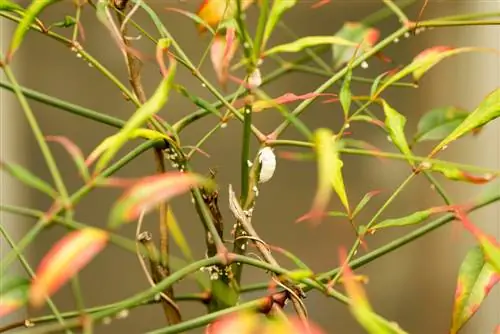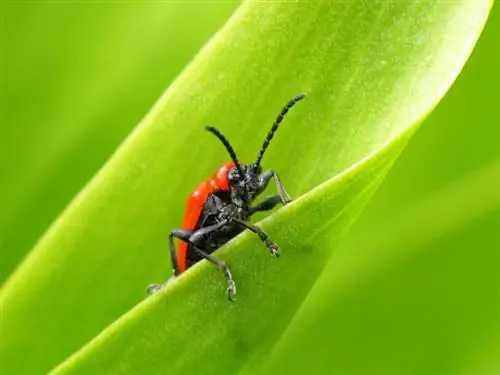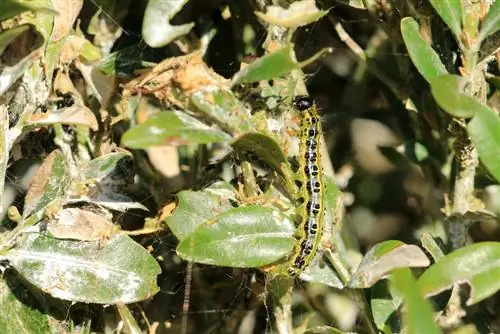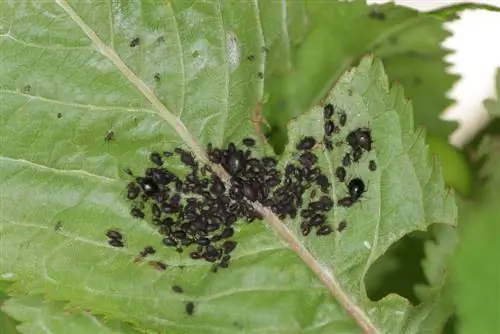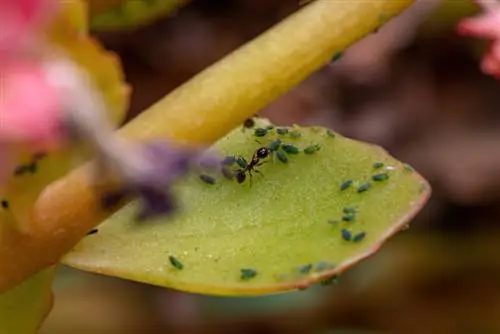- Author admin [email protected].
- Public 2024-01-02 03:03.
- Last modified 2025-01-23 11:19.
Until a few years ago, bamboo pests were hardly known in Central Europe. Bamboo pests are on the rise due to plant imports and climate changes. You can find out what these are and how you can combat the pests effectively here.
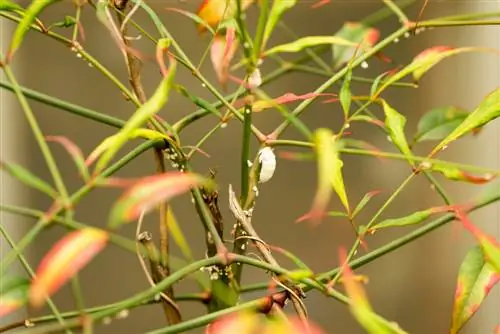
What pests attack bamboo and how do you combat them?
Bamboo pests such as lice, mites, whiteflies and thrips can damage the plants. Control methods include spraying with horsetail broth, removing infected leaves and stalks, using commercially available aphid-free products and increasing humidity by watering and showering.
Experience has shown that pests are rarely a problem on the robust bamboo plants. Provided they are disrupted in a timely manner and combated effectively. You should know these bamboo killers:
- Lice and mites
- Whiteflies and thrips
- Voles
Lice, mites and their natural opponents
Mealybugs or mealybugs hide under the stalk sheaths on bamboo plants. Fargesia attacks them particularly frequently. Aphids appear on bamboo plants from the beginning of March. Their sucking deforms leaves and causes yellow leaves or brown leaves. Along with the lice, sooty mold fungi also attack the damaged leaves. This can lead to more serious damage, in which young bamboo plants in particular die.
At the latest when the black, sticky coating is visible on the leaves, the bamboo should be sprayed with horsetail broth or commercially available aphid-free products. When buying, look for products that are gentle on beneficial insects. Collecting infected leaves is also helpful.
The Asian bamboo mite, Schizotetranychus celarius, was introduced with bamboo imports from China in the 1990s. It prefers hard-leaved bamboo species such as Phyllostachys. Gall mites, on the other hand, only appear in extremely dry weather.
Dense bamboo hedges with a rhizome barrier that is too dry and bamboo plants in pots are particularly susceptible. First indication of mites: bright, narrow spots spread on the upper side of the leaves. The mites sit protected in their webs on the underside. Remove and burn affected leaves and stalks or treat with potash soap, nettle powder or acaricide. Preventive measure: Water bamboo more often, shower and ensure higher humidity.
What to do if you are infested with whiteflies or thrips?
Whiteflies (Phyllostachys) and thrips are small but dangerous insects. They appear at the end of May and bore their eggs directly into the plant tissue or deposit them on shoots and leaves. Unlike whiteflies, thrips do not have wings. They can be transported by wind and are called air plankton. The larvae are light or yellow-green. Their sucking activity creates silvery-light cells on the tops of the leaves. The thrips and their larvae sit in the black excrement spots on the undersides of the leaves.
Both insects cannot tolerate moisture. Therefore, rinse the bamboo and pack it in foil for a few days. Preventive measure: Blue glue boards. Support the natural insect killers in your garden. Such as:
- Ants
- Ladybug
- ground beetles
- Predatory mites
- Hoverflies and Lacewings
- Spiders
- Wasps
Tips & Tricks
In China, the home of bamboo, pandas can also be dangerous to bamboo. However, the animals can only be observed in the zoo.

